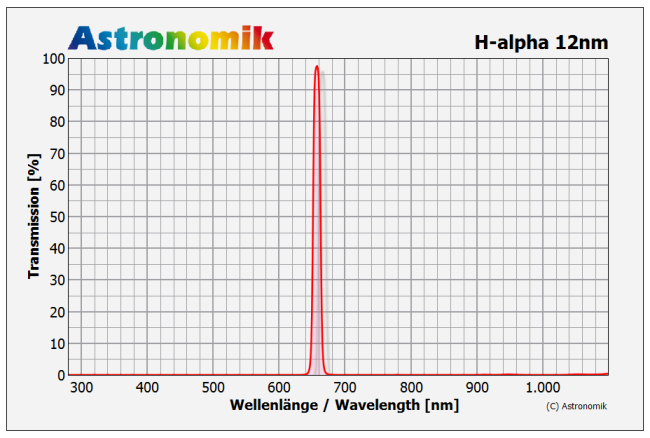Hello Narrowband!
As I already mentioned in previous articles the narrowband imaging is for me something like final frontier. It gives you incredible flexibility meaning that you're independent from the moon phase. For example I love taking pictures outside of the city because even though I have light pollution filter, the quality of the pictures taken outside the city is simply much better and in the past few months I had two opportunities to go to my cottage to shoot and both of them were when the moon was either full or 98%. You can imagine my frustration because the pictures turned out to be worse that my regular shots from Brno so I've wasted two trips just to shoot unusable pictures.
I've been thinking about getting H-Alpha filter since the summer but it was on the bottom of my list because of the price and other things. I knew that occasionally they come up in the secondhand section of the Czech astronomy forum but I couldn't buy it anyway since my DSLR would block the light that the filter would let through.
It all changed when I astro modified my DLSR. Luckily just week after I modify it I was able to purchase the secondhand filter for 60% of the original price. Also it was exactly the one I've wanted. Astronomik H-Alpha 12nm. That means it only lets through 12 nm out of the light spectrum.
12 nanometers is still a lot and I didn't want narrower filter because it would make focusing and aligning telescope hard and I would also need really long expositions and I have yet to figure out the guiding. Another thing is that I can only guide my Celestron with my Bresser and not vice versa. I'm planning on buying 50mm guidescope for the Bresser as guiding 600mm scope is easier that 1500mm.
When I got it I figured that I should first try it with lens since it has f/2.5 and just 125mm so I could do longer exposures without guiding. About the result, the Rosette nebula is there but blurry because my focus was off just by a millimetre.
The next night I thought that I would try using it with my Bresser and with good alignment I was able to do 50s exposures and I've gathered more than 70 minutes of total exposure time. I stacked the images in Deep Sky Stacker and processed the final image in Photoshop. It was basically plain red but when I selected only the red channel I was blown away by the amount of the detail hiding in there. I was very satisfied with the result and I can't wait for taking the pictures with guiding on lower ISO, this one was taken with ISO 3200. What is also worth mentioning is that it was taken during 98% waxing moon which was only 30 degrees from the target. This really shows the power of the narrowband.
It all changed when I astro modified my DLSR. Luckily just week after I modify it I was able to purchase the secondhand filter for 60% of the original price. Also it was exactly the one I've wanted. Astronomik H-Alpha 12nm. That means it only lets through 12 nm out of the light spectrum.
12 nanometers is still a lot and I didn't want narrower filter because it would make focusing and aligning telescope hard and I would also need really long expositions and I have yet to figure out the guiding. Another thing is that I can only guide my Celestron with my Bresser and not vice versa. I'm planning on buying 50mm guidescope for the Bresser as guiding 600mm scope is easier that 1500mm.
When I got it I figured that I should first try it with lens since it has f/2.5 and just 125mm so I could do longer exposures without guiding. About the result, the Rosette nebula is there but blurry because my focus was off just by a millimetre.
 |
| The Instagram post of the blurry Rosette nebula |
The next night I thought that I would try using it with my Bresser and with good alignment I was able to do 50s exposures and I've gathered more than 70 minutes of total exposure time. I stacked the images in Deep Sky Stacker and processed the final image in Photoshop. It was basically plain red but when I selected only the red channel I was blown away by the amount of the detail hiding in there. I was very satisfied with the result and I can't wait for taking the pictures with guiding on lower ISO, this one was taken with ISO 3200. What is also worth mentioning is that it was taken during 98% waxing moon which was only 30 degrees from the target. This really shows the power of the narrowband.


Comments
Post a Comment